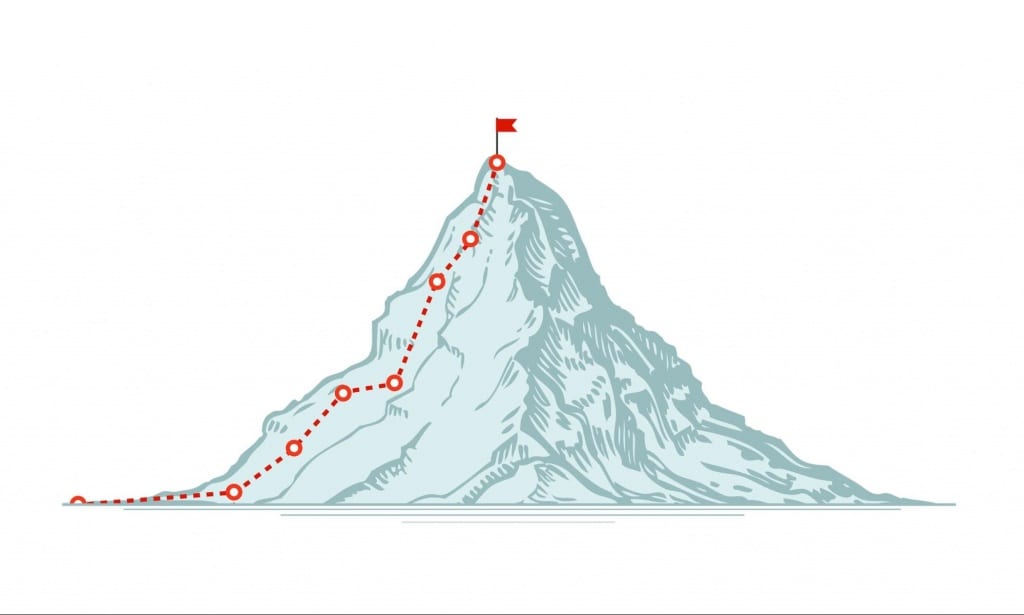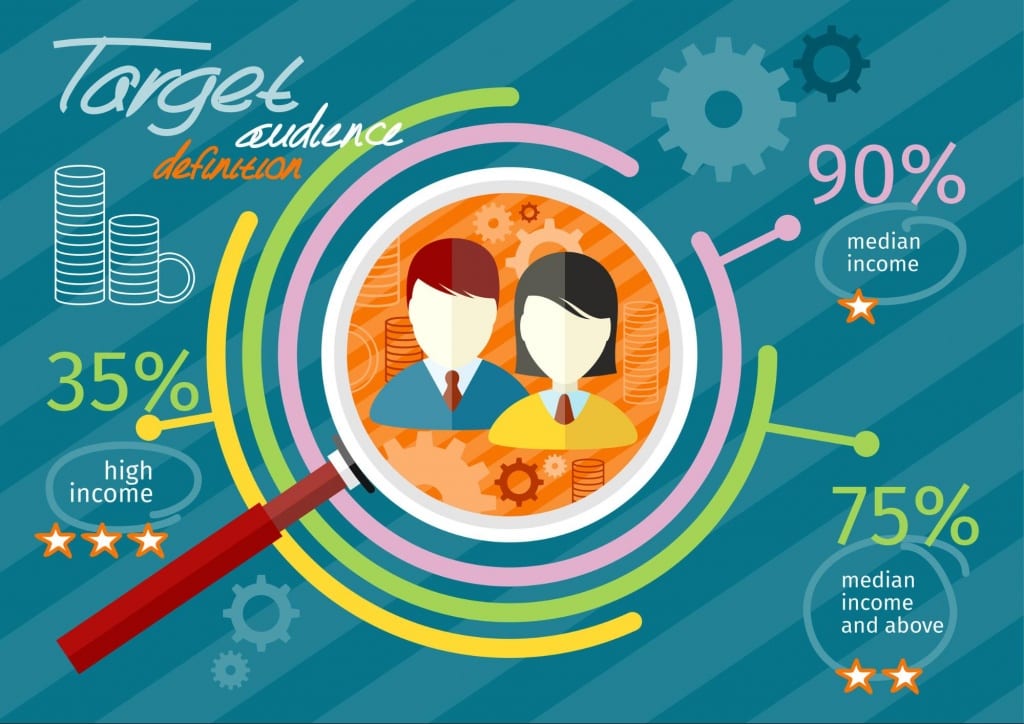Paid social media can offer great returns on investment (ROI) and connect you to the right audiences with laser precision. That, of course, presumes you are using the platform correctly. Otherwise, you could be spending a lot of money on social media advertising that misses the mark. They may be unappealing to the viewer. Or, much worse, they may drive interest at first but fail to convert.
Whatever the problem is, ads created without best practices are wasting your business’s money. They also create countless missed opportunities to convert someone who might have been genuinely interested in what your business has to offer.
Getting paid social right is especially important in an era where organic reach is falling off a cliff.
So what can you do to improve your social media ads? You can start with these seven steps to making your social ads better and having them actually lead to a sale.
Step 1: Set a Social Media Advertising Campaign Objective (That’s Not a Vanity Metric)

Every marketing campaign should have a goal, and social media advertising is no different. Yet, many marketers promote posts or create campaigns without a specific, marketing-focused objective in mind. They may have a slew of intended goals. Worse, create campaigns with the sole objective to get “likes” and reach.
Instead, decide what you want audiences to do when they see your ad. Then, make sure that your ad content and the structure of your campaign naturally guides the viewer to your preferred destination. Create target performance goals, preferably using benchmarks from older campaigns. Optimize them towards fulfilling your goals.
Possible campaign objectives include:
Driving traffic to your homepage or a specific product page
Driving engagement by encouraging comments, shares, or the use of particular hashtags
Increasing awareness for your brand or a specific product
Generating leads by promoting gated content that requires an email signup or contact form submission
Increasing sales by improving interest in a product’s features or promoting it through sales or specials
Step 2: Focus Only on Platforms Most Likely to Contain Your Target Demographics and Fulfill Your Objectives

Certain campaigns work better on certain social media platforms. For instance, very few people on LinkedIn may be tempted to share your company profile for the chance to win something. On Facebook however, the same campaign might work really well. On Facebook, people have more of an interest in consumer products over professional services.
Similarly, brands looking to earn sales of a product aimed at the 25 and younger crowd may want to avoid Facebook. Facebook participation is dropping among younger generations. Instead, they can look to Snapchat, which 78% of 18-24 year olds use, most of them daily.
Of course, these are just generalizations based on social media demographics across the U.S. Your own data could tell a different story. Take a look at your current audiences. Try to determine which platform has the largest volume of your target segments.
You should also look to platforms that offer less resistance to your marketing goals. Ask yourself: do I get consistent engagement on this channel? Do I struggle to pull attention away from my competitors here?
Choose the platforms most likely to give you success, and focus wholeheartedly on them with your key objective firmly in mind.
Step 3: Target Common Denominators Among Your Audience Groups

Advertising tools on social networks like Facebook can get ridiculously specific. You could show ads just to teen boys between 16-18 who live in one city and like the movie The Purge, for instance. But narrowing your scope too finely in this way increases the chances that you get minimal performance. Smaller sample groups create fewer statistical opportunities. Besides, there are always outliers to your typical buyer personas worth showing ads to.
To negate the possibility that your scope gets too narrow, find a middle ground between generic “all audiences” settings and hyper-specific targeting settings. For example, you could select a wider metro area for a location but only choose “people who live here” instead of “everyone in this location.” Or, you could broaden your core age demographic into a few years higher and lower on each end, such as targeting 17-28 year olds instead of a razor thin 18-22 college demographic.
Save these custom audiences once you’ve created them, and pay close attention to how segments perform within them. The performance data you create for your campaign become incredibly valuable later when trying to optimize towards specific personas.
The fact that some campaigns convert differently than expected and some CPAs fluctuate means that you should save every campaign’s performance data for your next benchmark. Setting goals and getting things off is more important for optimizing your performance over time compared to guessing wildly each time and occasionally being right.
Step 4: Ensure Your Ads Look Like Other Organic Content

One of the best parts about social media ads is that they don’t disrupt the typical user experience. Someone is scrolling along their newsfeed, and they may not even notice that some of the content they see is sponsored.
That is the ideal. Otherwise, you could raise internal alarms that make people mistrust your brand. 86% of people don’t want to follow brands at all on social media. That’s usually because these brands zealously overpromote.
On the other hand, playing into the types of content people like to see already can improve engagement and overall campaign performance. So know your audience. Try to duplicate the types of content they like to interact with while still giving them a strong call to action.
Also, make good use of all the tools available to you, including possible ad formats. Facebook now offers carousel ads, for instance, that show multiple photos of a single product or promotion. Ads like these are perfect at showcasing a product from multiple angles or capturing the full extent of emotion your various photos want to get across.
Step 5: Make Your Ad Part of a Larger Campaign Funnel

Very few people click on an ad and then directly purchase something. They need to be nurtured. Some purchase decisions take time. Those that appear to be on an impulse may also happen after a long period of consideration.
For example, someone may be interested in a hot new video game but not willing to pay full price. An ad for the game could show them a great clip of the game in action or highlight a particular feature. The more interested the publisher is able to make the person, the less of a discount they’ll need to commit to buying — if any discount at all.
The key is to give people enough content to sustain them while they mull the purchase over. Your campaigns should target people at specific stages of your buyer funnel. They should aim to convert them to the next stage.
As another example, consider a company that offers an organization app with a monthly subscription. A campaign for someone closer to the purchase stage at the bottom of the funnel may offer a free demo. However, someone barely aware of the product may need to make a closer connection to the how the product benefits them. A possible campaign format for this person could ask them to take a “30 day good habit challenge,” where they do something positive like stretch before bed for 30 days. Participating in the challenge can involve visiting a simple interactive checklist, which also highlights the benefits of the app’s features.
In this way, someone commits to something more directly relevant to their life before thinking more concretely about what a particular app can offer them.
Step 6: Set a Reasonable Daily Budget, and Form a Competitive Bidding Strategy

When your ad has a chance to show on a social platform, you first have to win a virtual bidding war against others. This can get expensive quickly without the right bidding strategy behind your campaign. Bidding too cheaply can also mean you only get the impressions your competitors didn’t want, hurting your performance compared to a more mid-level price approach.
So, instead of just gambling, determine what your break-even point is. Set a goal for a cost per acquisition (CPA) or a cost per action, and then multiply this by your campaign’s expected conversion rate. That figure equals your maximum cost per click in order to achieve your desired CPA.
For instance, if you wanted a goal CPA of $12 and have a campaign that converts around 0.8% of impressions, then $12 x 0.8% = $0.10 cents. This should be your maximum bid given expected performance.
The fact that some campaigns convert differently than expected and some CPAs fluctuate means that you should save every campaign’s performance data for your next benchmark. Setting goals and getting things off is more important for optimizing your performance over time compared to guessing wildly each time and occasionally being right.
Step 7: Measure, Test, and Modify to Improve Paid Social Performance Over Time

Experimentation is the key to chasing better performance and return on investment from each campaign. You can use the data from past campaigns to inform educated guesses on how to tweak the next one to work better.
You can also experiment by changing around your ad copy (the text), your images, and your offers to see which version of a campaign performs best. There’s also the opportunity to serve the same ads to different target segment groups to see which one bites more.
Read also : 5 Ways to Revamp Your Social Media Strategy in 2018
If you need help optimizing your campaigns, A/B testing, and benchmarking your performance to inform your next campaign strategy, we’re here to help. We can create social media advertising campaigns and multi-campaign strategies to help you strive for more success with each ad you create.
Contact us today to learn more and to get started making your social media ads better than ever.





